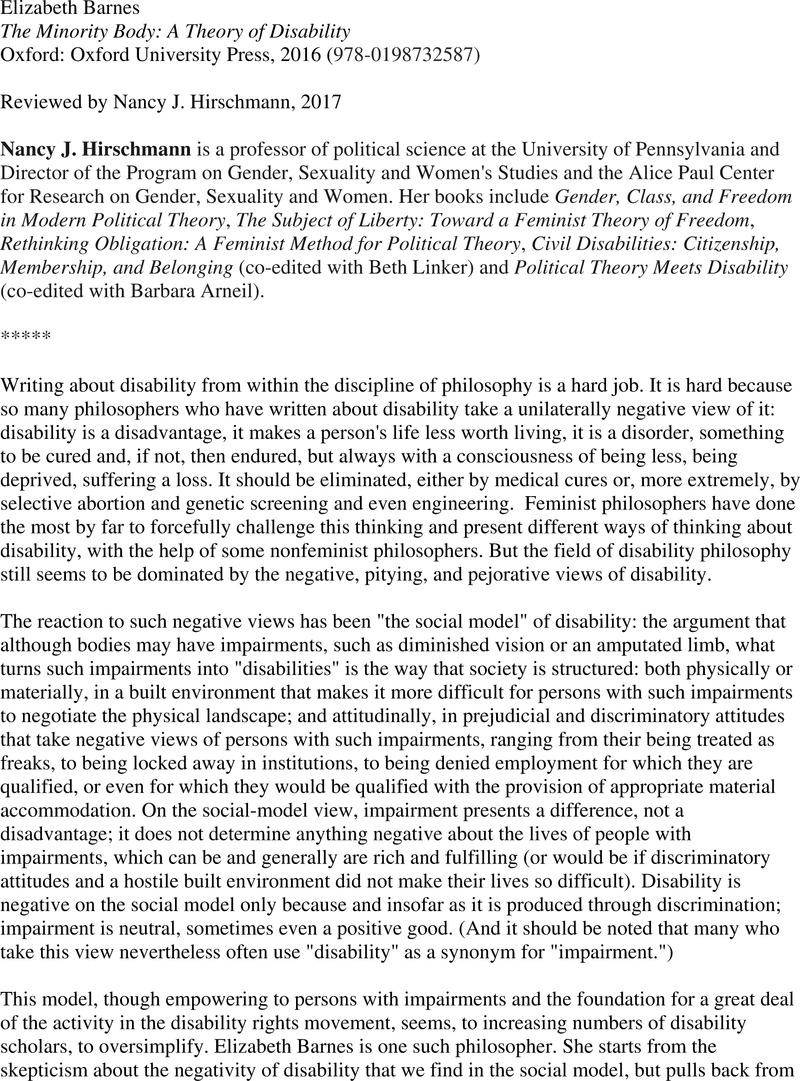

For example, citing disability studies scholar Rosemarie Garland-Thomson (1997), Barnes notes:

Barnes situates disability directly within the sociocultural realm, and pays tribute to the meanings of embodiment, which I understand to be related to the social construction of bodies. But as Barnes demonstrates, the perception of disability as bad-difference is persistent.īarnes showcases the relationship between individual and collective (social) life (i.e.

The being of disability is replete with beautiful complexity. Disability is always in relation to the world around us. Neutrality, then, is always in relation to the world around us. Barnes shows how the mere-difference view of disability demonstrates how disability might have good or bad effects, depending on circumstances. Barnes shows that the neutrality of disability is a key way of shifting the meaning of disability away from simply (and only) being classified as bad-difference. Barnes shows that there are good and bad experiences of disability, which we should not immediately assume lead to a decrease in well-being. But don't be fooled-neutrality is incredibly complex. 88).īarnes' Value-Neutral Model suggests that disability is neutral.

On the contrary, Barnes delves deeper in the "mere-difference" view of disability, developing her own articulation-The Value-Neutral Model (Barnes, 2016, p. But, mere-difference does not mean no difference. The mere-difference view of disability maintains that disability is neutral with respect to well-being (Barnes, 2016, pp. Here, Barnes arrives at the distinction between disability as "bad-difference" or "mere-difference". However, as Barnes later notes, both of these models assume that disability is a bad or unwanted difference. The proposed dichotomy suggests that either we attribute all the bad effects of disability to social prejudice, or we accept an account of disability according to which disability is an individual matter (a 'personal tragedy') (Barnes, 2016, p. Proponents of the social model often set up a dichotomy-a choice between social and so-called 'medical' models of disability. Barnes makes an important claim that we cannot forge a dichotomy between the medical and social models of disability, and I agree with this. Social models of disability suggest that disability is a result of ableism and inaccessible environments. Objective views or medical models of disability typically characterize disability as a "personal tragedy" (p. Barnes goes through objectivist, naturalistic models of disability, as well as the social model of disability. This is a complex conundrum-but Barnes does not shy away from it. "I want to figure out what disability is" says Barnes (p.


 0 kommentar(er)
0 kommentar(er)
